|
Last World War Wednesday, we looked at the use of ice cream in the U.S. Navy during the First World War, especially aboard hospital ships. Now it's time for a reprise! By the Second World War, ice cream was firmly entrenched aboard Naval vessels. So much so, that battleships and aircraft carriers were actually outfitted with ice cream machinery, and by the end of the war the Navy was training sailors in their uses through special classes. The above propaganda poster, courtesy the National Archives, outlines all of the requirements to build a battleship. "Your Battleship and Her Requirements" may have been targeted toward factory workers, but I think it is more likely this poster was designed to impress upon ordinary Americans the extraordinary amount of materials and supplies needed to keep a battleship in fighting trim. What I found particularly interesting, was that among the supplies listed, alongside fruits and vegetables and meat and even candy, was 60,000 quarts of ice cream! Smaller vessels, such as destroyer escorts and submarines, did not have the space for their own ice cream making machinery, although they did have freezers. In fact, it became common for destroyer escorts and PT boats to rescue downed pilots (the aircraft carries were too big for the job) and "ransom" them for ice cream. Last week a brand new food podcast debuted for American Public Television called "If This Food Could Talk," and I'm so pleased to say I was featured in the first episode, "Frozen in Time: Ice Cream and America's Past." I had a blast doing the research for that episode's interview, which has inspired these two recent World War Wednesday posts. Have a listen if you want to learn more about ice cream in American history, and especially the story of ice cream in the Navy. But while I was doing the research, I kept running across references to ice cream as a health food! The National Dairy Council really leaned into the notion of ice cream and the armed forces. This advertisement reads, "There's a reason why the U.S. Navy serves Ice Cream. America's favorite dairy food - Ice Cream - is an important source of vitamins, proteins and minerals." The ad goes on: "Navy menus don't just happen! Every food included in the diet of Navy personnel, ashore or afloat, is there for a purpose. It is there because it has been okayed by the staff of experts at the Subsistence Research Laboratory of the U.S. Navy in Chicago for making an important contribution to the health, strength, and morale fighters must have to win! "These highly skilled and trained technicians at the laboratory know every condition under which the men live - know their requirements - and make sure exactly what each food will do for those men before it is approved. "That is why it is significant that ice cream ranks so high on Navy menus. It is not only a favorite food, but it also supplies valuable vitamins, proteins, and minerals. For that reason, wherever practical, the Navy gets ice cream! "Throughout the world - over the seven seas - the talents of the Subsistence Research Laboratory of the U.S. Navy are directed to keeping our Navy a strong, healthy, hard-hitting force; making sure it gets the foods the men like - the foods they need for victory! "Ice Cream Is a Fighting Food "Ice cream is a favorite with all branches of our armed forces - and it is important that they get this valuable food. So fi you aren't always able to get all the ice cream you want - remember, you're 'sharing' this nutritious food with our fighters." The National Dairy Council might be just a SMIDGE biased in this regard, but certainly the federal government ranked milk, and by extension milk products, very highly in terms of nutrition during the Second World War, notably as part of the Basic 7 nutrition recommendations. This was almost certainly a holdover from the Progressive Era's take on milk as the "perfect food" - combining proteins, carbohydrates, and fats all in one. We see this in another advertisement, this time by the National Dairy Products Corporation. The National Dairy Council is an industry-funded research and marketing organization. But the National Dairy Products Corporation would later become Kraft Foods. "Here's what one leatherneck dreams about! "One Marine's dream of the post-war world is a mountain of strawberry ice cream. He wrote his girl from Guadalcanal that he wants it three times a day, every day for five years. In standard servings, that's over 900 quarts! "Strawberry ice cream was a symbol, of course, to a hot, tired fighting man in a fox-hole - a symbol of his home town and the corner drug store - a symbol of America. It must have appealed to lots of folks, for many newspapers carried the story. "There are good reasons why ice cream is on Army menus regularly - good reason why busy war workers eat so much of it. It is more than a delicious dessert - it's a valuable food - rich in vitamins and calcium. "Right now, of course, ice cream must come from the same milk supply that furnishes milk, cream, butter and cheese to soldiers, civilians and allies alike. That means less ice cream for your family's use. If you'll be content with your fair share - if you'll accept part of your order in fruit ices - you can continue to enjoy ice cream. "And we'll continue to improve ice cream processing and packaging - controlling its quality - keeping it pure and good. "We'll continue our intensive laboratory research... developing important new products from milk... bringing to America's fighters, workers and friendly allies the full benefits of nature's most nearly perfect food." Here you can see the "perfect food" rhetoric in action! And interestingly, this one touts the role of ice cream in the Army as well. In my opinion ice cream, for all the rhetoric about nutrition, had far more to do with morale than anything else. But there is some truth to the idea that as a dessert it was superior to cake or pie. For one thing, ice cream does have some protein, in addition to a decent amount of fat. Full fat dairy is generally proven to be more filling and satisfying and protein and fat slow down the absorption of sugar directly into the bloodstream, making the "energy-giving" properties of carbohydrates longer-lasting and less likely to make you crash (unlike cake and cookies). That being said, viewing ice cream as a health food is questionable today. But in the period, the discoveries of vitamins and minerals like calcium were cutting-edge, and any food containing those essential nutrients was considered good for you. Ice cream also fit neatly into ideas (unconscious or otherwise) of White supremacy and American (i.e. Anglo-Saxon) culture. As the National Dairy Products Corporation marketing team wrote, ice cream was "a symbol of America." When combined with soda fountains (the wholesome, if sugary, alternative to saloons and beer halls), ice cream seemed to represent the best of America - slim, good-looking, young, White America, that is. Today, ice cream's modern accessibility has given us ice cream alternatives aplenty, especially for folks who can't consume dairy. Ice cream's ubiquity has also meant some of its luster has faded. But at a time of extreme stress - the violence of the theater of war, the privations of home front rationing, the push to mobilize for total war, the fear of invasion - ice cream provided a moment of bliss in the midst of uncertainty. Ice cream is still an essential tradition aboard Naval vessels today. When you're miles from home for months at a time, anything that seems like a treat gives morale a boost. It's still a treasured treat in our household, whether homemade or store bought (if you find yourself in upstate New York - do yourself a favor and seek out Stewart's Shops. They have the best commercial ice cream around). What does ice cream mean to you? The Food Historian blog is supported by patrons on Patreon! Patrons help keep blog posts like this one free and available to the public. Join us for awesome members-only content like free digitized cookbooks from my personal collection, e-newsletter, and even snail mail from time to time! A special patrons-only post is coming tomorrow with more on ice cream in World War II - this time featuring Elsie the Cow! Join now for as little as $1/month.
Don't like Patreon? Leave a tip!
1 Comment
Dear Reader, I finally did it, and not in a good way. A few weeks ago I hosted a beautiful (albeit hot and humid) French Garden Party, a belated celebration of Bastille Day, for approximately 30 people. The decorations were gorgeous and the food was fabulous and I did not take a single. solitary. photograph. My consternation was extreme. My beautiful screen porch was set with tables dressed in blue and white striped linens. It was BYOB - bring your own baguette, and folks brought fancy cheeses to go with the goat cheese and paper-thin ham I provided. I made homemade mushroom walnut pate and TWO compound butters - fresh herb and garlic, and lemon caper. I made beautiful French salads: potato and green bean vinaigrette, lentils vinaigrette with shallot and parsley and a hint of fresh rosemary, cucumber with tarragon and sour cream, celery with black olives and anchovies, peach basil. We had honeydew melon and both sweet dark AND Queen Anne cherries. We had wine and spritzers a-plenty. A friend brought chocolate cream puffs. I made lemon pots de crème and earl grey madeleines. But the absolute star of the show was this chocolate mousse, which I flavored with rose water. And since I had one little glass pot left over from the party, I snapped a few photographs a few days later to give you the incredibly easy recipe so that you, too, may feature this glorious star, and have your guests talking about it for days afterwards (no really - they did). But course, I wouldn't be a food historian if I didn't give you a little context, and I was curious about the history of chocolate mousse, so here you go: A Brief History of Chocolate MousseGoodness there is a lot of nonsense out on the internet about chocolate mousse! Way, WAY, too many sources say it was invented by Toulouse Lautrec, and that it was called "mayonnaise de chocolat." People. Chocolate mousse dates back to at least the 18th century, if not earlier, so it was around long before Monsieur Lautrec. I did, to my surprise, find a couple of recipe references to "mayonnaise au chocolat." It sounds so ridiculous as to be fake, but this was apparently a real recipe, albeit a name I can only date to the 20th century. One recipe is from a 1909 French cookbook, which calls for melting chocolate with egg yolks and adding beaten egg whites, and offers a clue to the name: it says at the end to mix the egg whites and the chocolate mixture "like ordinary mayonnaise." A few references in the 1920s and '30s, and then where it was probably popularized in America - a reference from a 1940 issue of Gourmet magazine (not readable online, alas - if anyone tracks down a hard copy of the original, let me know!). Another recipe is from a 1951 French cookbook, with not very detailed directions. According to my translation, "mayonnaise au chocolat" mixes melted chocolate with egg yolks and a few tablespoons of cream which is then cooked and then mixed with egg whites (unclear whether or not they are beaten stiff or not, but likely yes) and chilled. Another is from the 1961 edition of Mastering the Art of French Cooking by Julia Child and Simone Beck, which has a recipe for "Moussline au Chocolat, Mayonnaise au Chocolat, Fondant au Chocolat" (yes, three names for the same recipe!) the subheading of which reads "Chocolate Mousse - a cold dessert." Mousseline is actually a sauce mixed with whipped cream (for instance, you can turn hollandaise sauce into a mousseline by adding whipped cream), whereas mousse is a thickened chilled dessert made with whipped cream. The Julia Child recipe conflates the two, and her recipe calls for an egg yolk cooked custard mixed with melted chocolate, with whipped egg whites folded in. It is then served with crème anglaise or whipped cream. So, none of these recipes are truly chocolate mousse, because the mixtures contain no whipped cream whatsoever. But Toulouse Lautrec and a crazy-to-Americans name like "chocolate mayonnaise" is so much more dramatic than doing actual historical research and looking at primary sources. SIGH. People. We can do better. The earliest references to "chocolate mousse" I could find date to 1687 and refer to the habit of Indigenous peoples in Central America of frothing their chocolate beverages with either a mollinio or by pouring them between cups. A habit which Europeans apparently adopted. A 1701 French dictionary continues the reference to frothy chocolate beverages in its definition of "mousser" or "to foam." The earliest reference I could find to the dessert mousse we know and love today comes from the 1768 French cookbook, "L'art de bien faire les glaces d'office ou les vrais principes pour congeier tous les rafraichissemens" or The Art of Making Ice Cream Well, or the True Principles for Freezing All Refreshments. And lest you think it is just about ice cream, the extremely long title adds, "Ave Un Traite Sur Les Mousses," or "With A Treatise On Mousses." Chocolate mousse (as pictured above) is simply one of dozens of mousse recipes listed, but the early versions are quite similar to the modern. Grate the chocolate and melt it in a saucepan over low heat, then add cream, little by little, to thin it down. Pass it through a sieve, sweeten it, and then let cool and whisk to a foam. By the 19th century, we're adding egg yolks to make a smoother, more custard-y base, as you can see from this pair of recipes by early French restauranteur Antoine Beauvilliers, who published his 1814 "The Art of Cooking" as a French cookbook that became foundational to generations of French chefs and home cooks. English cooks, however, had access before that, judging by this 1812 recipe, which also called for egg yolks. We're still adding large amounts of whipped cream, though, keeping in classic mousse style. It took a bit longer for Americans to adapt to chocolate mousse, although they were prodigious chocolate drinkers, and certainly by the mid-19th century were consuming chocolate custards and ice creams. It wasn't really until (as far as I and the Food Timeline can tell) celebrity cookbook author and cooking school teacher Maria Parloa intervened that it got popular. The Food Timeline cites a 1892 article with Miss Maria Parloa lecturing on chocolate mousse, among other things, but I found a reference dating back to 1885 where she's lecturing on chocolate mousse in Buffalo, NY. However, it doesn't seem to be QUITE the same as we consider chocolate mousse today. Her 1887 recipe for it calls for freezing it like ice cream, albeit without stirring. Regardless of whether the recipe calls for egg yolks or not, or whether it's frozen or not, chocolate mousse in the modern style is easier to make than you'd think. Chocolate Rose Mousse RecipeA French Garden Party called for something easy to prepare and delicious for dessert. Because it was a garden party, I decided on chocolate pots de crème or mousse flavored with rose fairly early on. I used to dislike floral flavors, but after making an Egyptian rosewater dessert last year, and trying Harney & Sons seriously divine Valentine's Day tea, which was chocolate black tea with rosebuds (affiliate link), I was smitten. After realizing how many eggs I'd go through making a triple batch of both lemon AND chocolate pots de crème, I decided to do just the lemon (15 pots) and do the rest as chocolate mousse (15 pots). I found these adorable little glass pots with covers on Amazon, should you care to purchase them yourself from this affiliate link. I adapted several recipes online, and since I didn't want to mess with steeping the cream with rosebuds or rose petals or any other options, I decided to go the less expensive and way easier rose water direction. Rose water is used frequently in Middle Eastern cooking, and is often less expensive in the "ethnic" section than in the spice aisle. In preparing for the party, in which I was attempting a brand new recipe, I didn't want to try to mess with egg yolks any more than I already had to with the lemon pots de crème (which turned out only okay). So the simple mixture of heavy cream, dark chocolate, and a little icing sugar seemed best. I then added rose water to taste, which turned out about perfect. Here's the reasonable-serving recipe, which I tripled to get 15 generous servings for the party. This makes more like 6 servings, 4 if you're being greedy. 1 1/2 cups heavy cream (I used a local dairy brand, which is richer than national brands) 1 cup high-quality dark chocolate chips (like Guittard) 1/4 cup powdered sugar 1 teaspoon rose water Heat a saucepan of water over medium heat, bringing it to a simmer. Place a heat-proof bowl (glass or metal) over the simmering water and add 3/4 cup heavy cream and the chocolate chips. Stir gently until the chocolate chips are completely melted. Remove from heat. In a large bowl, beat the remaining 3/4 cup heavy cream until you get soft peaks, then add the 1/4 cup powered sugar and beat until you get stiff peaks. Add the rose water and beat to combine. 1 teaspoon should be enough to stand up to the chocolate, but taste the whipped cream. The rose water should be present, but not overpowering. If faint, add another 1/2 teaspoon and beat again. Then, using a ladle, add approximately 1/3 cup of the cooled chocolate-cream mixture to your whipped cream, one ladle at a time, and gently fold to combine using a rubber spatula. To fold, use the spatula to cut down the center of the whipped cream mixture and scrape up from the bottom. Rotate the bowl slightly, and repeat the action, until the chocolate is incorporated. Add another ladle of chocolate and continue until you have folded in all of the chocolate without totally deflating the whipped cream. Spoon into small glass jars or custard cups and refrigerate until ready to serve. It was so gorgeous. Light but rich, with a subtle hint of rosewater, which added fascinating depths to the chocolate. Folks gobbled it all up, and it was by far the best dessert of the party. The one lonely little pot left allowed me to take the above photo the following day, so you're welcome! I didn't serve it with whipped cream during the party, and it's admittedly a little overkill, but it does look pretty. So now you have the recipe AND some history, plus some food history mythbusting! So do yourself a favor and go splurge on some high-quality ingredients and treat yourself and your loved ones to this easy and stunningly delicious dessert. To quote Julia, quoting the French, Bon Appetit! The Food Historian blog is supported by patrons on Patreon! Patrons help keep blog posts like this one free and available to the public. Join us for awesome members-only content like free digitized cookbooks from my personal collection, e-newsletter, and even snail mail from time to time! Don't like Patreon? Leave a tip!
I've been getting a lot of calls for information about ice cream lately, and that has sent me down a rabbit hole. I did a whole talk on the history of ice cream last year (you can watch the filmed version here), but while I knew ice cream was a big tradition in naval history, I didn't know the connection to the First World War. I don't usually cover the history of military consumption of food during the World Wars, but this topic was just too much fun to resist. Ice cream wasn't always the Navy's treat of choice. For over a hundred years rum was the preferred ration by many sailors. But in the late 19th century the Temperance movement began to have increasing power over society. By 1919 we had a Constitutional Amendment (the 19th - often known just as "Prohibition"). But the armed forces went dry much earlier. In particular, on July 1, 1914, the U.S. Navy went alcohol-free. At the same time, naval vessels were being stocked with ice cream. In the May, 1913 issue of The Ice Cream Trade Journal, an article entitled "Sailors Like Ice Cream" explained that the Navy had recently ordered 350,000 pounds of evaporated milk - ostensibly for all sorts of cooking and baking, but ice cream was high on the list. You may wonder why hospital ships in the First World War were manufacturing ice cream on board? Well, it involves multiple factors. First is that ice cream was a product of milk; during the Progressive Era, milk was considered the "perfect food" as it contained fats, proteins, and carbohydrates all in one (supposedly) easily digestible package. Although many people are lactose intolerant, the White Anglo-Saxon dominance of American culture at the time prized milk. Ice cream rode into nutritional value on the coattails of milk. During this time period, dairy-based products like puddings, custards, milk and cream on cooked cereals or with toast, and ice cream were all considered nutritious foods for people who had been injured or ill. Along with foods like beef tea, eggs, and stewed fruits, these made up the bulk of recommended hospital foods from the late 19th century to World War I. Ice cream shows up quite frequently in early reports of the Surgeon General to the U.S. Navy. In his 1918 report to the Secretary of the Navy, ice cream appears to cause more problems than it solves. Notably, the use of ice cream produced commercially results in several instances of crew sickness, including simple illnesses like strep throat, alongside more serious ones like a diphtheria outbreak in Newport in 1917, which was traced to ice cream produced off-station. Fears of the spread of typhoid from places like restaurants, soda fountains, and ice cream shops led to "antityphoid inoculations" at naval shipyards. In Chicago, "All soft-drink and ice-cream stands have promised to give sailors individual service in the form of paper cups and dishes. To make this more effective, it is believed that an order should be issued prohibiting men from accepting any other kind of service." The Surgeon General also recommended inspection of offsite dairies and bottling works for milk, ice cream, and soft drinks to ensure proper sterilization of equipment and pasteurization of dairy products, as well as inoculation of employees against typhoid and smallpox. But ice cream was also noted as essential not only on the existing hospital ship USS Solace, but also on two new hospital ships fitted out since the declaration of war in 1917 - the USS Mercy and the USS Comfort. These ships included a cold storage plant and a refrigerating machine that could "produce, under favorable circumstances, a ton of ice or more a day." The ships also had distilling plants, able to convert seawater to fresh water, up to 20,000 gallons per day. In addition to describing the medical wards, crew facilities, laundry, and kitchen, the report noted: The most valuable adjunct in the treatment and feeding of the sick is the milk emulsifier, popularly known as the "mechanical cow." The milk produced from this machine is made from a combination of unsalted butter and skimmed milk powder and can be made with any proportion of butter fat and proteins desired. This machine will produce 15 gallons of cold, pasteurized milk in 45 minutes. The electric ice cream machine, controlled by one man, makes 10 gallons at a time and is supplemented by small freezers for preparing individual diets for the sick. According to the October, 1918 issue of The Milk Dealer, the "mechanical cow" had been displayed as part of the exhibits at the National Dairy Show in Columbus, Ohio in the fall of 1917. They noted: The "Mechanical Cow" Becoming Famous. Few people who saw the combination exhibit of Merrell-Soule Co. and the DeLaval Separator Co., last October, in Columbus, would have believed that within a year from that beginning the use of the Emulsor in combining Skimmed Milk Powder, unsalted butter and water would be taken up by Army, Navy, City Administrations, etc. throughout the United States. Such is the fact, however. The Mechanical Cow is now producing milk and cream on the U.S.S. Comfort and U.S.S. Mercy, the two splendid hospital ships of the Navy. An installation on board the U.S.S. South Carolina is kept working continuously to supply the demands of her crew. Mechanical Cows are filling the needs of milk at the base hospitals and several camps and one large machine is being operated by one of the city departments of New York. Health officers, physicians, milk experts and authorities on infant feeding all unanimously agree that milk and cream made by means of the "Mechanical Cow" is superior in every way to the average milk supply. This advertisement for "The Chilly King," a cooling machine that was part of the "Mechanical Cow" system on ships like the U.S.S. Mercy (a photograph of the machinery on board featured in the ad) also names a number of naval ships and military camps which use it, including:
By enabling ships and camps to use shelf-stable skimmed milk powder and unsalted butter, which keeps a very long time in cold storage, "mechanical cows" allowed for an ample supply of milk made in sanitary conditions. For naval ships, this was especially important when crews were away from shore for long periods of time. Ice cream also helped patients recover from illness (or so medical professionals at the time believed) but it also helped a great deal with morale. The professionalization of ship operations via the installation of state-of-the-art equipment was a hallmark of the First World War, but the U.S.'s late involvement in the war hamstrung most shipbuilding operations. Indeed, the construction of a new hospital ship in 1916 was actually shelved in favor of retrofitting existing ships like those that were transformed into the U.S.S. Comfort and U.S.S. Mercy, which had initially served as the sister passenger steamboats S.S. Havana and S.S. Saratoga, respectively. Part of the Ward Line, these very fast steamships ran the New York City to Havana, Cuba route but were requisitioned in 1917 first as troop transports, and later as hospital ships. The U.S.S. Mercy spent time as a home for the homeless during the Great Depression before she was scrapped in the 1930s, and the U.S.S. Comfort went back to civilian passenger transport for the Ward line under her old name, the S.S. Havana, before being pressed into service again in World War II, this time as a troop transport once again. The names USS Comfort and USS Mercy would be revived in World War II and a third pair of hospital ships bearing those names are still in operation today. Although ice cream is no longer considered central to the recuperation of the sick and wounded, it is still served on American naval vessels around the world. Ice cream would play an even more important role in the Navy during the Second World War. But that's a tale for another World War Wednesday! The Food Historian blog is supported by patrons on Patreon! Patrons help keep blog posts like this one free and available to the public. Join us for awesome members-only content like free digitized cookbooks from my personal collection, e-newsletter, and even snail mail from time to time! Don't like Patreon? Leave a tip!
|
AuthorSarah Wassberg Johnson has an MA in Public History from the University at Albany and studies early 20th century food history. Archives
July 2024
Categories
All
|
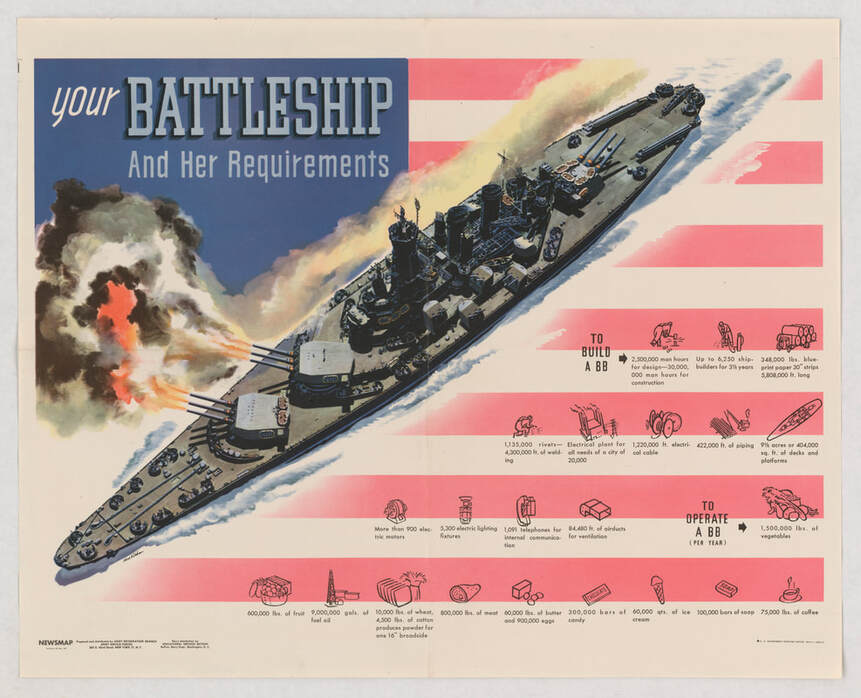

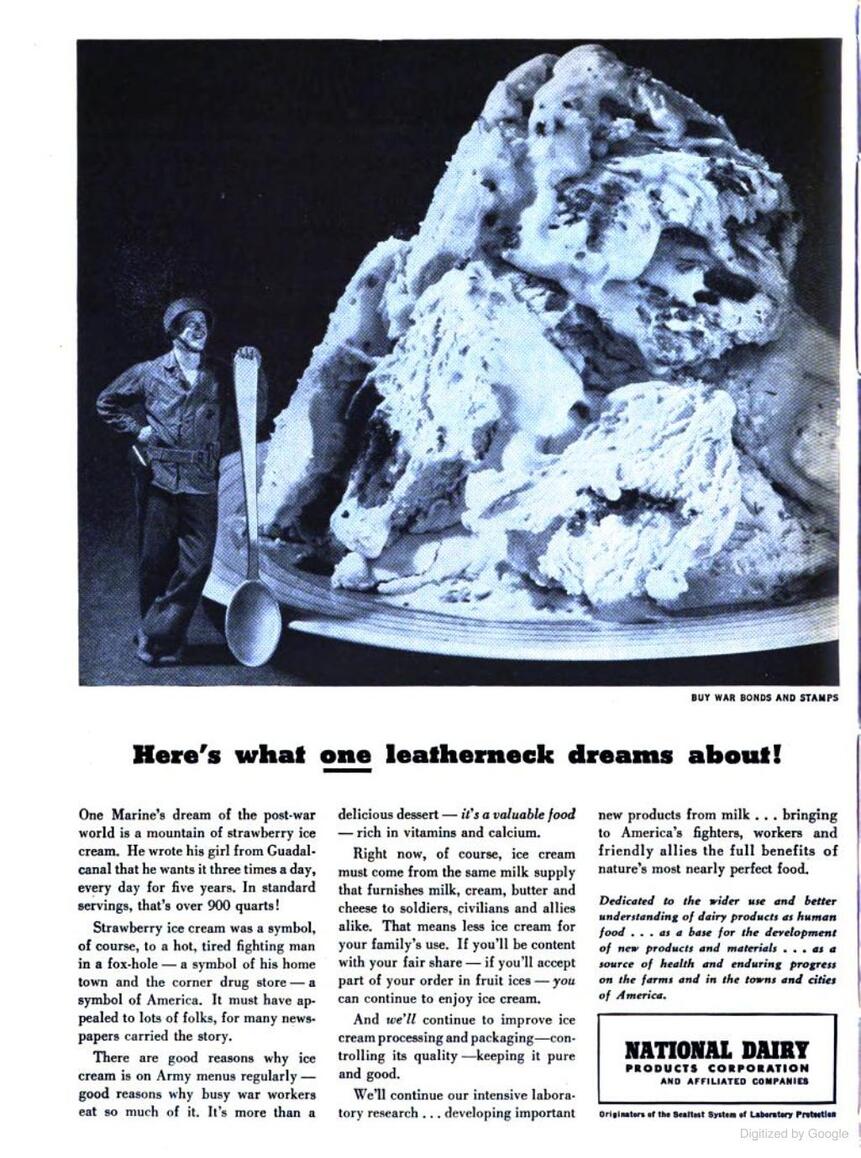
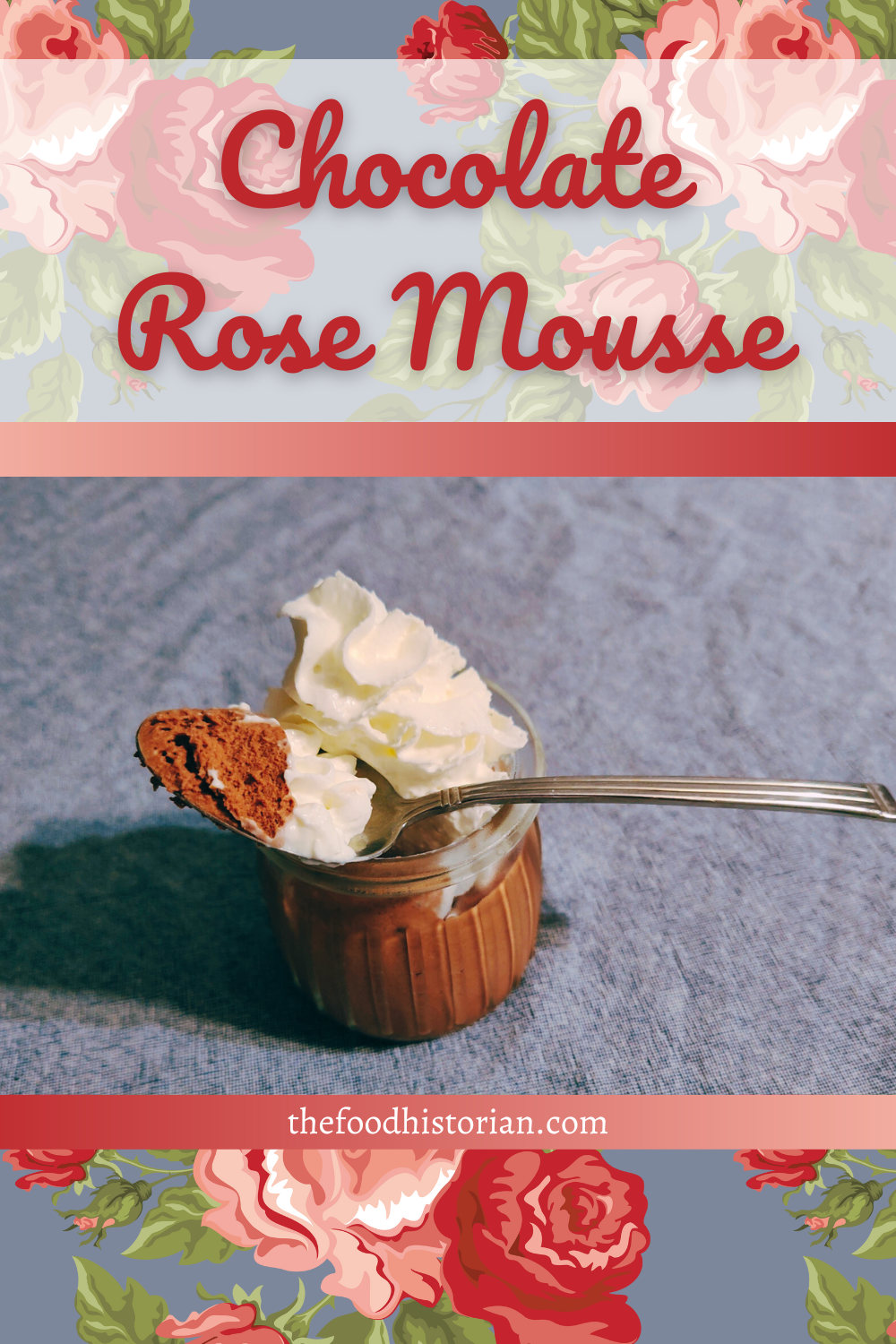
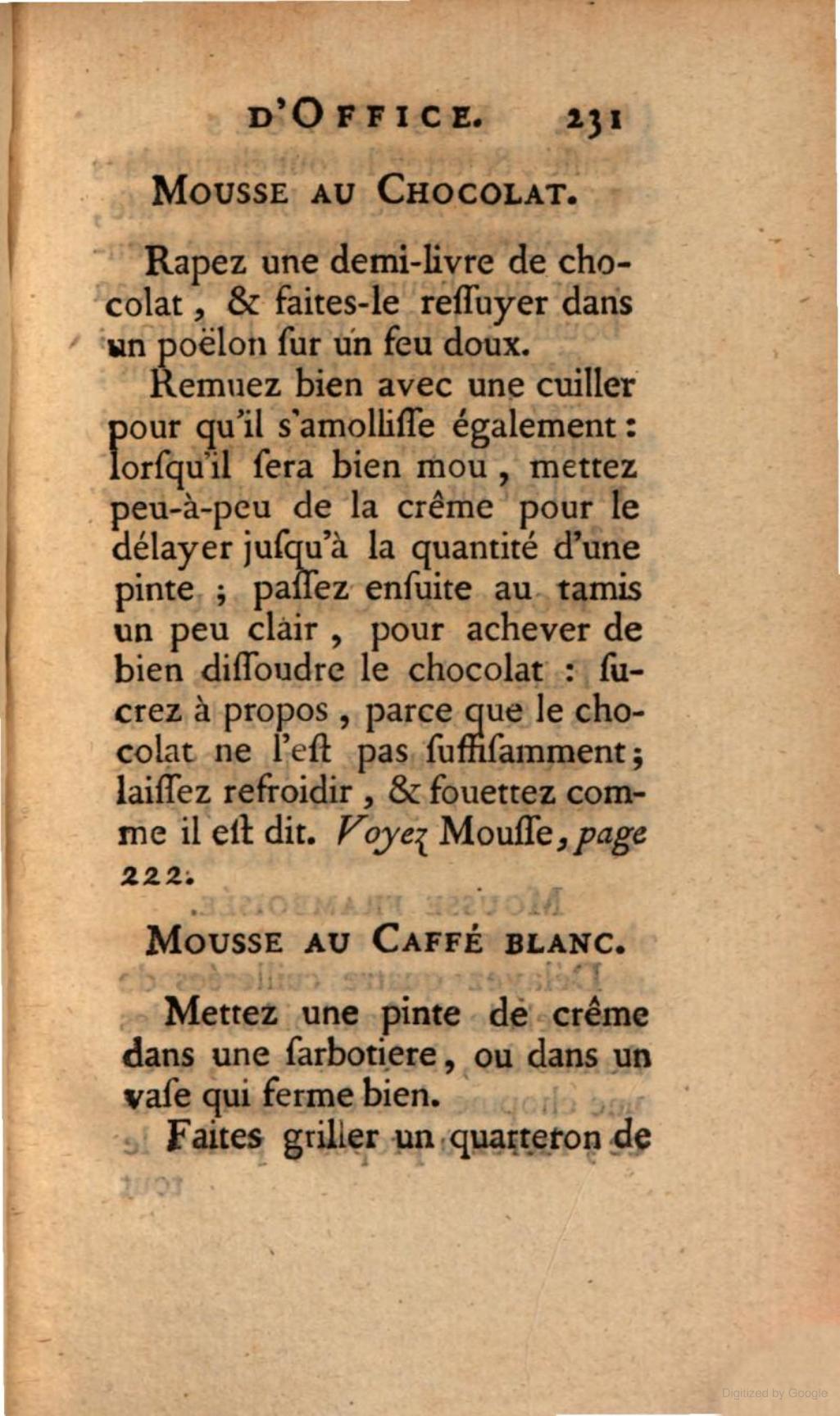
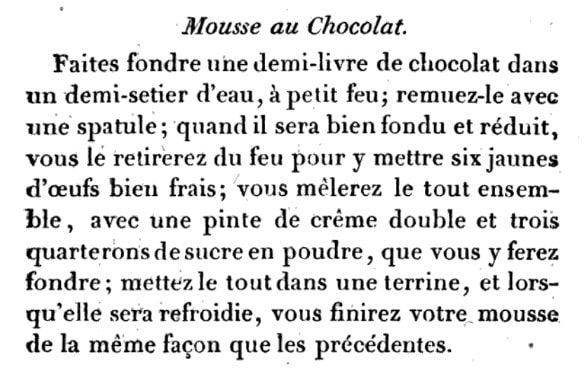
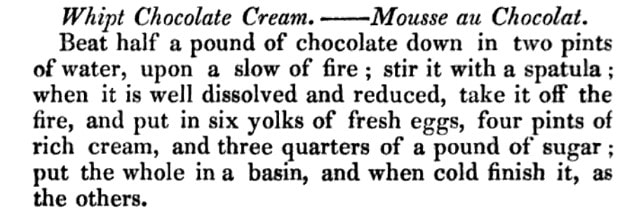
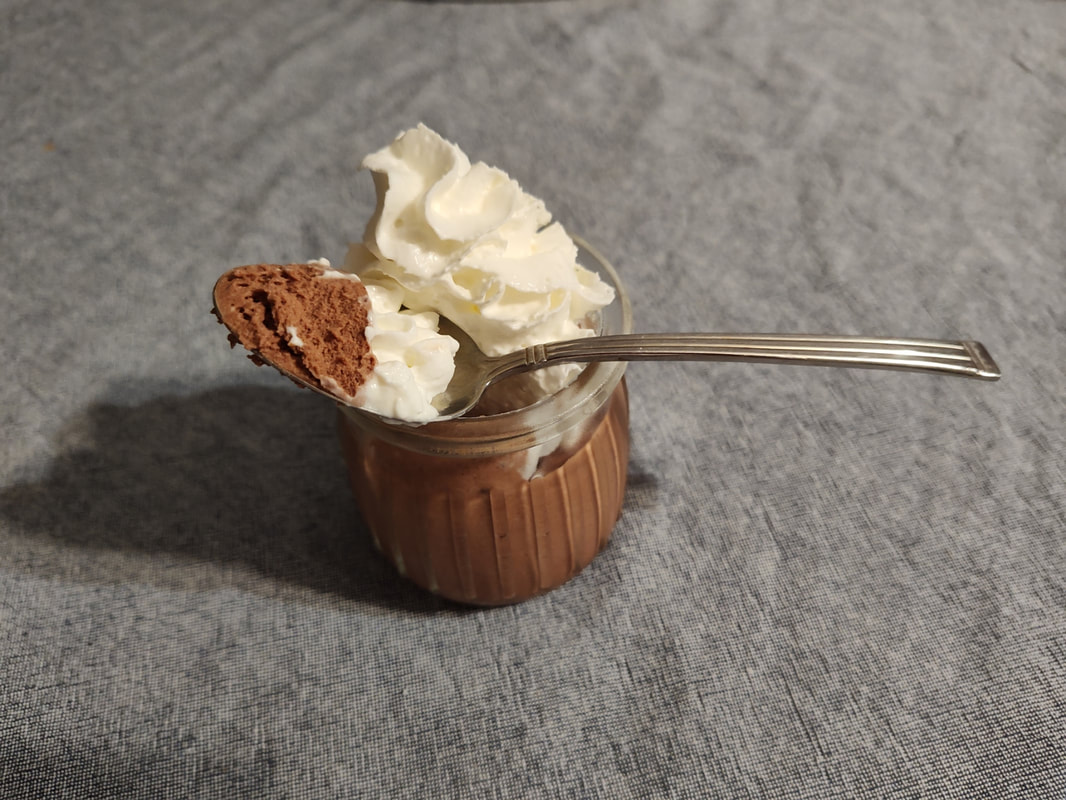
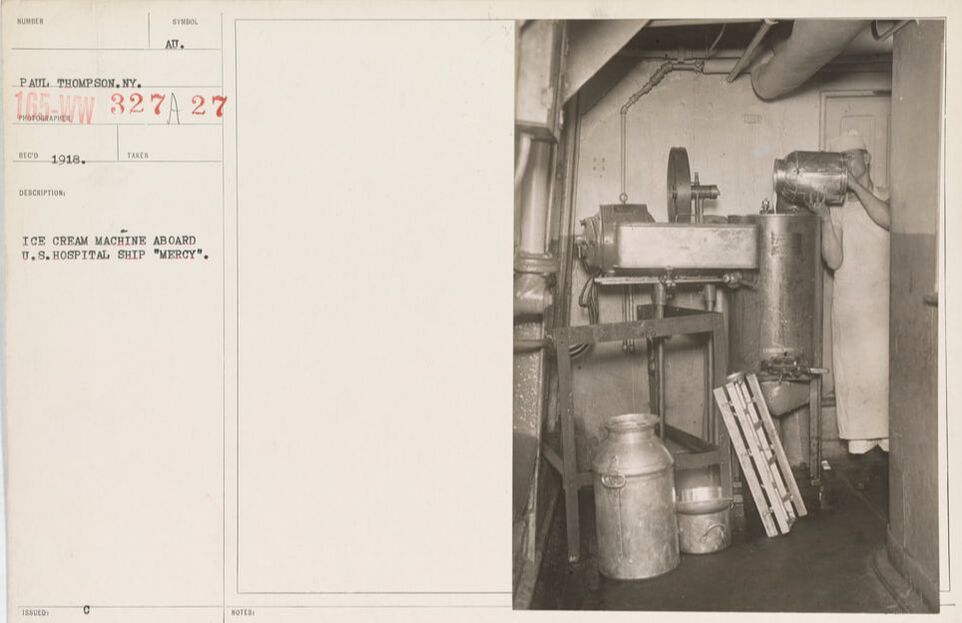
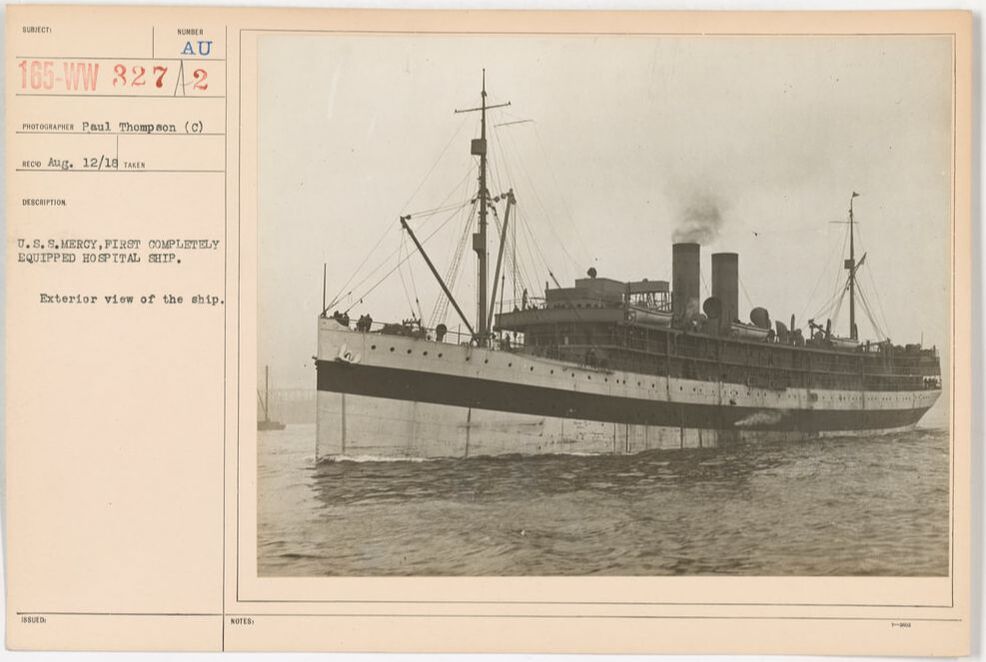
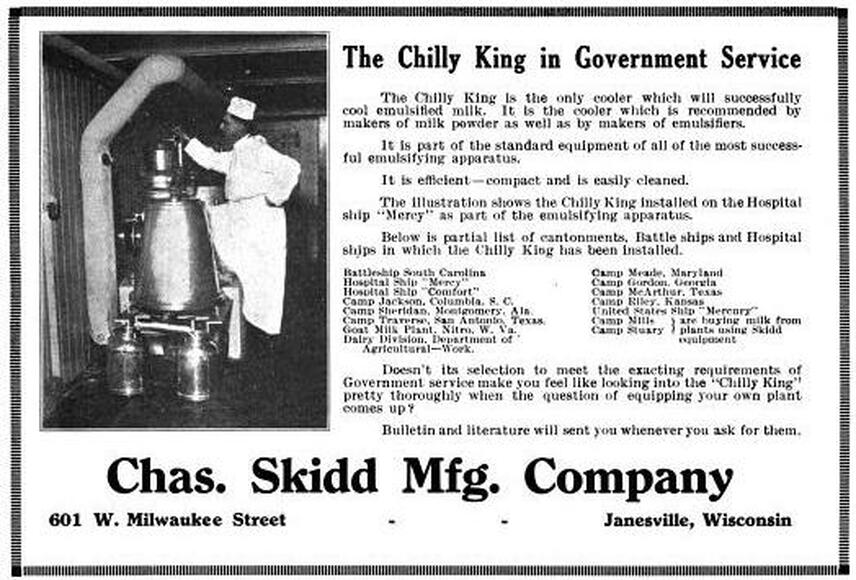
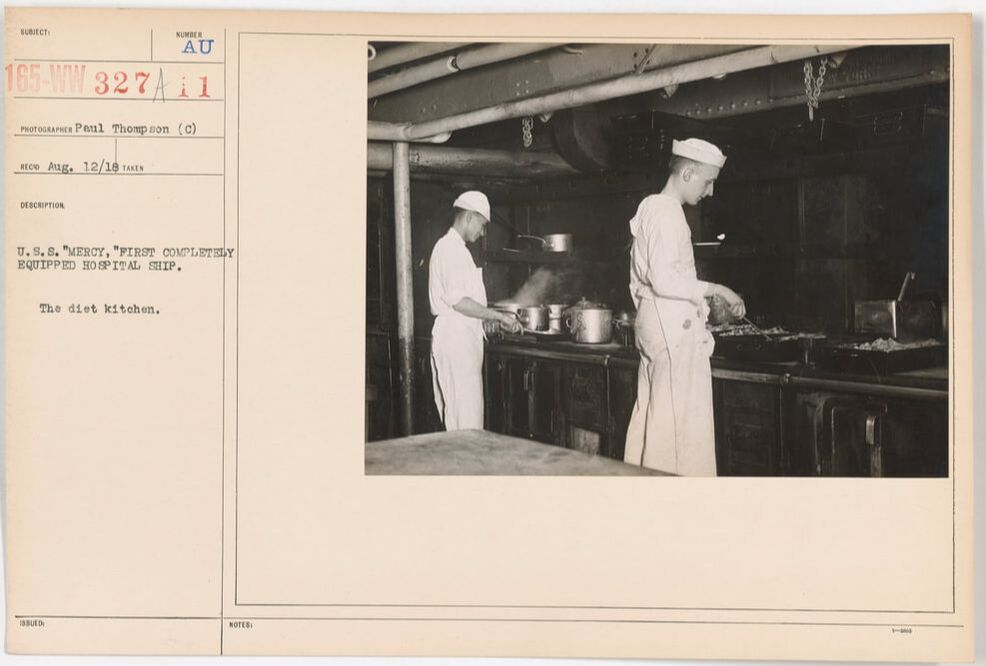

 RSS Feed
RSS Feed